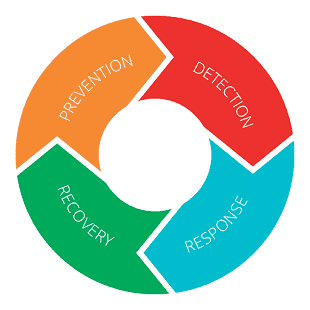Fraud Detection
Fraudulent activities have become progressively modern in our digitally-driven world, making fraud detection and prevention more important than before. This is not just another blog. This is your guide to fraud detection. We’ll dig into the domain of fraud detection, investigating successful strategies, the job of analytics, and the variety of solutions accessible to defend people and organizations.
Understanding the Landscape of Fraud Detection
Fraud detection is a multi-layered process aimed at finding out and moderating fraudulent exercises before they incur huge harm. From monetary exchanges to online communications, fraudsters exploit weaknesses in different sectors. The imperative lies in creating thorough strategies that envelop prevention and detection.
The Nexus of Fraud Detection and Prevention
Fraud detection and prevention remain inseparable. Prevention strategies go about as a proactive safeguard against expected fraud, while detection components act reflectively to recognize and quit continuous fraudulent exercises. To make a strong defense system against fraud, associations should incorporate both detection and prevention consistently.
The Bernie Madoff Ponzi scheme
In a bold case of deception going on for over twenty years, Bernie Madoff constructed a monetary empire of lies through his Bernard L. Madoff Investment Securities. Guaranteeing a complex technique, he tricked clients from celebrities to organizations, promising steady returns. It was a house of cards. Madoff made a Ponzi plot, paying “returns” from new investors cash to the early investors, all while distorting records. This house of cards at last unfolded in 2008, leaving thousands defrauded and confronting billions in losses.
Evaluations of the losses from the Madoff scheme range from $64.8 billion to $170 billion, contingent upon the accounting strategy utilized. This devastatingly affected people, families, and organizations. Madoff got justice, detained for his violations, yet the monetary and emotional scars remain. His plan stands as a sign of the hazards of fraud and the requirement for vigilance and strong guidelines in the financial world.
Leveraging Fraud Detection Analytics
In a time where information is huge, fraud detection analytics play an essential part in fraud detection. By utilizing advanced analytics devices, associations can filter through huge datasets to distinguish patterns and peculiarities indicating fraudulent behavior. AI and machine learning algorithms increase the accuracy of these analytics, constantly adjusting to developing fraud strategies.
Key Fraud Detection Strategies
- Behavioral Analysis
One of the most compelling fraud detection strategies includes examining client behavior to recognize deviations from usual patterns. Strange login times, unusual transactions, or irregular buying areas can raise warnings.
- Machine Learning Algorithms
Utilizing machine learning algorithms takes into consideration dynamic adaptation to new fraud trends. These algorithms consistently learn from information, improving their capacity to find out arising dangers.
- Real-time Monitoring
Constant checking allows quick identification of dubious activities as they happen, taking into consideration prompt mediation and prevention.
- Biometric Authentication
Integrating biometric verification adds an extra layer of safety, making it more difficult for fraudsters to acquire unauthorized access.
The Role of Fraud Detection Services
- Managed Detection and Response (MDR)
MDR fraud detection services offer proactive observing and reaction to likely dangers, giving a comprehensive way to deal with fraud prevention and detection.
- Incident Response Services
Timely reaction to detected incidents is essential. Incident reaction services assist associations with limiting the effect of fraud by quickly containing and alleviating the danger.
Comprehensive Fraud Detection Solutions
- Fraud Detection Software
One of the best fraud detection solutions is the execution of fraud detection software that automates the identification process, hailing unusual activities and diminishing dependence on manual audits.
- Integrated Fraud Management Systems
Integrated frameworks unite different parts of fraud prevention and detection, making a firm and proficient defense mechanism.
- Collaborative Intelligence Platforms
Platforms that work with data sharing between associations can upgrade the collective capacity to recognize and prevent fraud.
The Evolving Landscape and Future Challenges
As innovation propels, so do the strategies of fraudsters. The fate of fraud detection requires consistent development and adaptation to remain one stride ahead. Blockchain technology, AI, and decentralized identity solutions hold promise in reinforcing fraud prevention measures.
Emerging Trends in Fraud Detection
- Artificial Intelligence and Machine Learning Advancements
Continuous progressions in AI and machine learning are reshaping the landscape of fraud detection. These technologies can examine immense datasets with amazing speed and precision, distinguishing subtle patterns that might get missed during human detection. As artificial intelligence keeps on developing, so too will its capacity to recognize new and complex fraud plans.
- Blockchain Technology Integration
Blockchain, known for its safe and decentralized nature, is progressively being investigated as a solution for improving fraud prevention. Its tamper-resistant ledger system can give transparent and changeless records of transactions, decreasing the risk of fraudulent activities.
- Biometric Data Expansion
The extension of biometric information past fingerprints to incorporate facial recognition, voice authentication, and even behavioral biometrics is adding layers of safety to client validation. This makes it harder for fraudsters to compromise their personal data and gain unauthorized access.
Conclusion:
As fraud detection evolves, organizations should embrace a dynamic methodology that joins the strengths of technology, global collaboration, and human skills. The future holds exciting developments with the reconciliation of artificial intelligence, blockchain, and biometrics. By remaining informed, putting resources into inventive solutions, and encouraging cooperation, we can fabricate a fortified safeguard against the constantly changing landscape of fraud. Fraud detection isn’t simply a need; it is a constant excursion toward a more secure and safer digital world.
Also Read: https://alpinecasino.co.uk/

